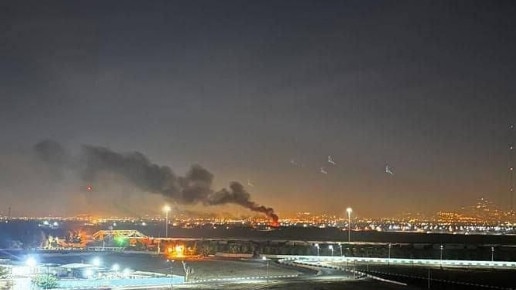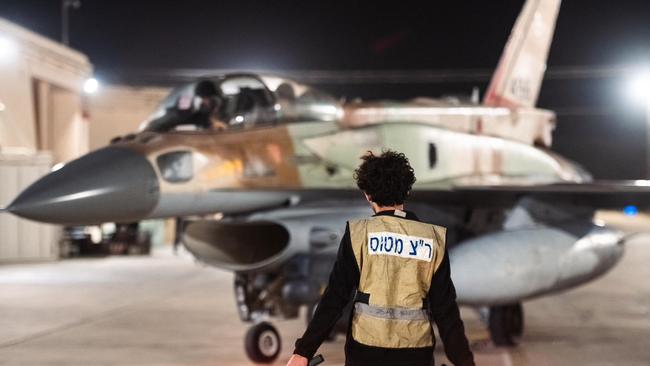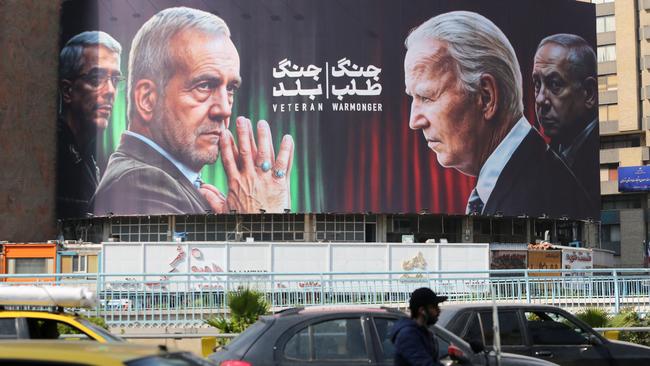Israeli strikes expose prowess gap between two arch enemies
The Israeli strikes on Iran hit several of Tehran’s most advanced air defences, exposing Iran’s vulnerability to future attacks as the two enemies engage in a new era of direct confrontation.
The Israeli strikes on Iran hit several of Tehran’s most advanced air defences, exposing Iran’s vulnerability to future attacks as the two enemies engage in a new era of direct confrontation.
During the hours-long attack early Saturday, Israeli warplanes struck Iranian military assets in three provinces, including three Russian-supplied aerial defence systems known as the S-300 and a fourth system, according to U.S. and Israeli officials. An Israeli official added that all the air-defence systems were rendered unusable.
The Israeli attack came after significant U.S. pressure to avoid hitting Iran’s nuclear and oil facilities, with the U.S. saying Iran should now stand down from further escalations.
In a speech on Sunday, Iranian Supreme Leader Ali Khamenei said that Israel had inflicted damage on Iran, though he didn’t specify what, and said that while Israel was exaggerating the impact, it would also be wrong to play down the attack or dismiss it as unimportant. Khamenei, who has led Iran since 1989, refrained from promising harsh retaliation, as he has done after other attacks in the past.
Successfully defanging Iran’s self-defence capabilities marks a new chapter in Israel’s confrontation with the Islamic Republic. It created a vulnerability in Iran’s air defences that highlighted the significant gaps between the two sides’ military capabilities. Israel claims it now had the ability to fly over Iranian airspace.
“Iran will have to do a lot of soul-searching and spend a lot of money on air-defence systems that are capable of intercepting these kinds of new threats,” said Farzin Nadimi, senior fellow and expert on Iran’s military with the Washington Institute, a think tank. “Iran is a military-industrial nation. There are so many targets in the country, so they really need all the air defences they can get their hands on.”

For decades, Iran and Israel have fought each other indirectly. Iran has armed and trained militias to harass and threaten its enemies, including Israel, as a way to keep conflict away from its own borders. Israel has pressured Iran through sabotage and assassinations targeting Iran’s nuclear program, and by hitting Iranian forces abroad, including in Syria.
The recent war has pitted the two enemies in a different kind of battle: a direct, long-distance war. And they are performing very differently.
Iran has twice, in April and October, been able to sporadically penetrate Israel’s air defences but only by firing hundreds of missiles at a time.
Israel has twice shown its ability to strike sensitive Iranian targets, with few if any of its weapons being intercepted. A previous Israeli attack hit an aerial defence radar in April. Saturday’s assault involved Israel’s most-advanced aerial weapon, F-35 jet fighters, which are adept at evading radar, people familiar with the mission said.
Israel hailed the weekend attack as a major victory.
“Now, the state of Israel has wider freedom of action in the air over Iran as well,” military spokesman Daniel Hagari said in a televised briefing Saturday.

The S-300 is a family of surface-to-air missile systems designed by the Soviet Union in the 1960s and 1970s, and now used to defend against planes, drones and, to some extent, cruise and ballistic missiles. Russia supplied Iran S-300 systems in 2016, after nine years of delay due to nuclear negotiations and international sanctions.
Although details about the systems aren’t publicly known, experts believe Iran received between 40 and 60 launchers as part of the total order, each of which is capable of carrying up to four missiles.
The S-300 systems are used to protect high-value targets such as nuclear sites and the domestic Mehrabad airport used for official flights. One battery is kept mobile and travels with Khamenei when he visits his home city of Mashhad in the country’s east, according to Nadimi, whose research is based on sources inside Iran and satellite imagery.
Iran has a domestically produced long-range, road-mobile air-defence system called Bavar-373, which it says can compete with the more advanced S-400 system. It also has a range of less advanced domestically produced aerial defence systems, which it can redeploy to replace the damaged batteries, Nadimi said.
Iran has long sought the more advanced S-400 systems from Russia, but Western officials say there is no evidence so far Tehran has received any.

Israel struck one of the S-300 defence batteries positioned near the Natanz nuclear facility in April when it attacked Iran in retaliation for a 300-missile and drone barrage. Saturday’s attack is believed to have hit most if not all of the remaining S-300s. Experts say that, even as the damage from the attack is still being assessed, the fact that Israel was able to hit Iran’s most advanced aerial defences and some of its most sensitive military sites is significant.
“Iran’s anti-air defences are vulnerable to superior strike technology. They’re insufficient to protect Iran’s airspace from better-equipped adversaries, Israel in particular,” said Afshon Ostovar, an expert on Iran’s military at the Naval Postgraduate School in Monterey, Calif. “Those systems aren’t easily replaced. Iran probably has some redundancies, but even so, Israel might have paved the way for future attacks to be easier and less restricted.”
While Israel owes much of its military prowess to U.S. assistance, Iran has relied mostly on domestic technological development and support from Russia and China. The recent exposure of its vulnerabilities raises questions about the limits and benefits of its alliance with Moscow and Beijing.
Since Russia’s full-scale invasion of Ukraine, Tehran and Moscow have strengthened their military ties, with Iran supplying drones and ballistic missiles to Moscow, Western officials say. China in 2020 signed a long-term partnership deal with Iran, which included some cooperation on military research and weapons development. Russia and Iran are due to complete their own long-term strategic partnership, Russian President Vladimir Putin said after meeting his Iranian counterpart last week.

Central Intelligence Agency Director William Burns said in July 2023 that there were signs of Russian technicians working on Iran’s space launch vehicle program “and other aspects of their missile programs.” Iran’s space launch program is believed to be part of efforts to develop intercontinental missiles.
Those relationships come with caveats, however. Russia and China both have strategic ties with some of Iran’s regional rivals, including Saudi Arabia. Russia shares some interests with Israel in Syria. China, which imports half of its energy from the Middle East and prefers to keep conflict in the Middle East subdued, has always been reluctant to provide military assistance to Iran, said Raz Zimmt, senior researcher at the Institute for National Security Studies in Israel, even as Beijing has worked to help Iran get around U.S. sanctions.
“Iran’s relationship with Russia and China is compartmentalised and follows each country’s interests,” said Dina Esfandiary, senior adviser for the Middle East and North Africa at the International Crisis Group. “It means there are times where Russia and China don’t see helping Iran out as in their interest.’”

U.S. officials question how quickly Russia will be able to provide Iran with new missile defences when its resources are stretched by the Ukraine war. Some U.S. officials believe delays could strain Russian-Iranian relations, which historically have been characterised by mistrust.
In the aftermath of the attack, Iranian officials appeared to play down the Israeli attack, suggesting that Tehran isn’t planning an immediate forceful response against Israel directly. Iran said Israel had fired missiles from Iraqi airspace, and accused the U.S. of complicity in the attack for providing Israel with advanced weaponry.
Khamenei on Sunday stressed that military pressure should not dissuade the Islamic Republic from pursuing advanced weapons, such as high-range missiles.
“Of course, our officials should be the ones to assess and precisely apprehend what needs to be done and do whatever is in the best interests of this country and nation,” Khamenei said. “They still haven’t been able to correctly understand the power, capability, ingenuity, and determination of the Iranian people. We need to make them understand these things.” Iran’s quest for military technology could complicate the conflicts in the Middle East and beyond, Ostovar said.
“For example, were Russia to supply Iran with S-400 anti-air batteries and send Russian troops to man those systems, it’d add another layer of geopolitical risk for Israel,” he said.
Dow Jones





To join the conversation, please log in. Don't have an account? Register
Join the conversation, you are commenting as Logout